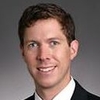Construction Litigation of Additional Insured Endorsements: Blanket Clause Risks, Contractual Privity, Coverage Limits

Welcome! Strafford is now BARBRI! The expert courses you know from the trusted global leader in legal education.
Course Details
- smart_display Format
On-Demand
- signal_cellular_alt Difficulty Level
- work Practice Area
Real Property - Transactions
- event Date
Wednesday, September 14, 2022
- schedule Time
1:00 p.m. ET./10:00 a.m. PT
- timer Program Length
90 minutes
-
This 90-minute webinar is eligible in most states for 1.5 CLE credits.
-
Live Online
On Demand
This CLE course will provide counsel for construction companies with guidance on the use of additional insured requirements in contracts and their role in passing insurance obligations through to subcontractors and suppliers. The panel will discuss the circuit split related to the need (or not) for contractual privity between the putative additional insured and named insured, and the risks associated with blanket additional insured endorsements rather than an endorsement specifically naming an additional insured. The panel will address what recent decisions in New York, Texas, and California tell counsel regarding future enforcement of additional insured endorsements.
Faculty

Ms. Barrese is a skilled insurance coverage attorney committed to providing practical advice, creative solutions, and the highest level of advocacy for policyholders. She helps clients recover on their insurance claims under a wide variety of policies, including commercial general liability, commercial property, builder's risk, professional liability, educator's legal liability, and captive policies. Ms. Barrese has extensive experience handling insurance coverage disputes arising from real estate development and construction projects. She frequently negotiates construction defect and additional insured claims on behalf of owners, architects, construction managers, and general contractors.

Mr. Middlebrooks concentrates his practice in insurance recovery, exclusively on behalf of policyholders. He also works in corporate and commercial litigation. Mr. Middlebrooks has assisted numerous policyholders with insurance recovery on a range of matters and insurance policies, including multiple matters involving first-party property policies and construction-related issues, as well as municipal-related concerns. He has also worked on claims involving representations and warranties insurance, as well as a variety of liability policies including public officials' liability, general liability, and directors' and officers' liability. Mr. Middlebrooks’ insurance recovery practice has involved claims that have undergone litigation, arbitration, mediation, formal appraisal proceedings, and that have successfully resolved without formalized proceedings. In addition to his insurance recovery work, his practice has involved construction-related disputes, and litigation involving financial institutes.

Mr. Podesta focuses his practice in the areas of insurance coverage and bad faith, business litigation, land development and general civil litigation. With more than three decades of experience in the insurance field, he has knowledge across the industry from contract language to insurance agents’ professional liability. As a former claims supervisor for a major insurer and as an insurance investigator prior to practicing law, he brings a “bottom-line” perspective to insurance coverage and bad faith matters as well as to his commercial and defense work.
Description
Owners and contractors on construction projects routinely ask downstream contractors and subcontractors to sign contracts wherein the latter agrees to provide the owners and general contractors with additional insured coverage for accidents or damages resulting from the performance of subcontractors' work on the project. The purpose of that coverage is to transfer the risk to the entity closest to controlling the risk.
An examination of additional insured cases requires some background regarding the duty to defend standard in the state the claim is being presented. What facts an insured or insurer may rely on to trigger coverage or deny coverage varies from state to state with regard to facts that are extrinsic, or outside the complaint against the insured. Understanding what can and can't be used, and for what purpose, is critical.
One recurring issue is whether there is an obligation to defend an additional insured and what connection must be shown between the subcontractor's operations or work and the claims against the additional insured. This depends on the language of the endorsement, but recent cases have indicated that coverage may be triggered even where there were no allegations by the injured person against the named insured.
Additionally, extrinsic facts may be necessary, and useable in many states, to confirm "insured" status, such as whether a defendant is an "owner" entitled to coverage, or whether it faces liability relating to the work or operations of a particular subcontractor.
Issues surrounding additional insured coverage are constantly being litigated. Because there is such a wide breadth of case law, practitioners are well-advised that there is an increasingly large body of case law applicable to the nature and scope of additional insured coverage, especially in the construction arena.
Listen as our authoritative panel discusses the current state of additional insured litigation, how the allegations within the complaint (and the facts omitted) may affect a defense obligation, and how proximate cause is determined. The panel will address recent decisions in major jurisdictions that may affect future claims.
Outline
- Additional insured coverage and recent litigation
- Different forms of additional insured endorsements: ISO forms, manuscript, and key language of each
- Defense obligation under the additional insured endorsement: the elements and checks in your state
- When can extrinsic facts outside of the complaint be used by the insured or insurer regarding a tender of defense
- Claims by named insured subcontractor's employee and the interplay between the indemnity agreement and the additional insured endorsement
- Duty to defend versus indemnify, and the concept that the "AI File" pays only defense costs
- Update of relevant recent case law
- New York
- Pennsylvania
- California/Nevada
Benefits
The panel will address these and other important topics:
- How is proximate cause determined when examining the named insured's connection to the accident?
- When can an injured employee of a named insured pursue an additional insured claim?
- What limits are there on the duty to defend in additional insured claims?
Unlimited access to premium CLE courses:
- Annual access
- Available live and on-demand
- Best for attorneys and legal professionals
Unlimited access to premium CPE courses.:
- Annual access
- Available live and on-demand
- Best for CPAs and tax professionals
Unlimited access to premium CLE, CPE, Professional Skills and Practice-Ready courses.:
- Annual access
- Available live and on-demand
- Best for legal, accounting, and tax professionals
Unlimited access to Professional Skills and Practice-Ready courses:
- Annual access
- Available on-demand
- Best for new attorneys
Related Courses
Recommended Resources
Explore the Advantages of Consistent Legal Language
- Learning & Development
- Business & Professional Skills
- Talent Development
How to Build a Standout Personal Brand Without Sacrificing Billable Hours
- Career Advancement
